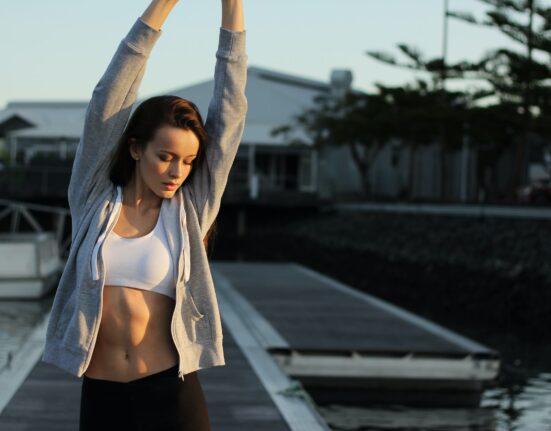Eagle pose is the best yoga for body flexibility, strength, and balance. This pose is also called Garudasana. In Sanskrit, Garudasana means “majestic bird pose.” An eagle is an ideal bird for its strength. So this yoga is named after it. This yoga almost covers all body points and enhances strength. It also promotes body balance.
It is quite difficult to do but not impossible. But if you can do this, your body becomes familiar with it. This pose looks like a human knot. However, the main challenge of this pose is to retain the balance of your body. Eagle pose yoga is best for body stretch. It gives strength to your core, calves, knees, ankles, and hips. In addition, it is good for body concentration.
Eagle pose yoga
At first, sit and bent on your legs, cross your legs, and slowly switch your weight to your left foot. Lift your right foot. Now, lift your thigh as much as you can. Now twist your both thighs. Hook your right foot with your left calf. Next, bring both your arm parallel in front of you. Now bend your arms and make a twist. With your hooked arm, join your forearms.
Now, wrap your both palms around each other by crossing your wrist. Keep that in mind, if the right leg is on top, the right arm is on top. Lift your elbow on your shoulder. Keep your spin on 90 degrees. Hold this pose for 5 to 10 seconds. Repeat all the procedures on another side. Note that, body alignment is key to this yoga.
Variations of this pose
Some important eagle poses variations are also very important to increase stability. The reclined pose is one of the best variations of the eagle. This pose gives you the best shoulder and hip stretch. Meanwhile, it is good to focus on specific body twists. The next pose is the block-assisted pose is also good for the building of ankle mobility.
Benefits of this yoga
I’ve mentioned some of the best benefits of eagle pose yoga. Yoga strengthens your calves, core, and hip muscles. It is the best yoga for arm and shoulder stretch and eases pain. Likewise, this pose is good for stronger knees and ankles pain. If you’re having a shoulder strain, try this pose. Moreover, it enhances focus and concentration.
This pose can also improve your confidence. It is also beneficial for stronger feet, shoulders, arms, calves, and back. For people with muscle weakness, this yoga acts as an antidote. Meanwhile, it is responsible for immune system stimulation. It also ensures the elimination of urinary problems and regulates blood pressure.
In conclusion, this helps you with sciatica and back pain. Also, reduce the problem of asthma. In addition, it helps in posture fixation and muscle strength. Eagle pose promotes nervous and muscular system coordination. That’s why you hold your body at your ankles. It also enhances your confidence. At last, eagle yoga can promote the ability to stay focused.
Eagle arm pose
The Eagle arm pose is for beginners who might find the typical eagle yoga pose difficult. This pose acts as an alternative to a typical pose. Sukhasana Garuda arm is another name for arm pose. In this yoga pose, you have to stand straight with an open shoulder and a straight back. Arm pose can stabilize body posture and promotes the peace of your mind, soul, and body.
Must read about How to Lose Arm Fat
Meanwhile, the Joints of the knee, ankle, hip, and shoulders strengthen by this. Additionally, it aids in body detoxification and cleanses the kidney. This pose promotes blood circulation to reproductive organs. Its deep breathing method can open your lung. Deep breathing eases respiratory issues. This yoga is best for asthma patients.
Common mistakes and precautions
The key to this yoga is alignment. If your forelimbs and hind limbs are not aligned, you’re not doing it right. If your back is not straight, you’re wasting your time on it. So the best key point to be noted is your body alignment. Some safety measures you should take in doing yoga. You should not do eagle pose yoga if you have, an elbow, knee, or ankle injury. Try this pose with the support of a wall to improve balancing.







